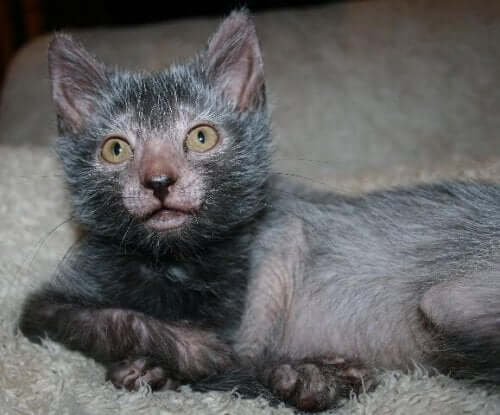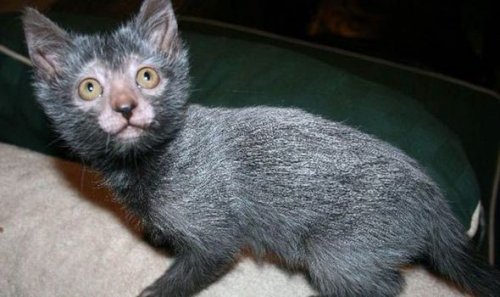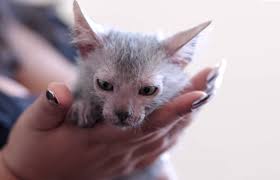Wolf Cat: Meet the Lykoi, the New Feline Breed

The official name for this new cat breed is Lykoi, named so because of the animal’s wolf cat appearance. Superstitious people think it’s a supernatural being. Then there are the ones who claim this breed emerged from a cross between a feline and a wolf. In today’s article, we’ll tell you more this peculiar wolf cat that attracts so much attention thanks to its fur and piercing eyes.
The Lykoi cat originated in two different states of the USA: Tennessee and Virginia. But, how can it be possible? You’d think those two litters wouldn’t be related to each other at all. However, both first litters had a lot of traits in common.
For one, the parents were regular domestic cats and the breed is not related to the Canidae family in any way – in spite of the name, “wolf cat.”
A genetic mutation
Instead, this new cat breed is the result of a natural genetic mutation that took place in a short-haired domestic cat. So, the new breed arose when two specimens with the same mutating gene mixed with each other.
In order to avoid any kind of congenital disease in the subsequent litters, the Lykoi cat breeders collaborated with a select group of veterinarians. They also worked under the advice of a team from the Department of Dermatology at the University of Tennessee.
A DNA test confirmed the wolf cat has no genetic relationship to the Sphynx cat, a well-known hairless breed. So both the Lykoi and the Sphinx are the results of separate mutations. Furthermore, neither one is related to the Devon Rex.
Lykoi means wolf in Greek. They got this name due to the appearance of the first specimens. The wolf cat is one of the most peculiar in the entire world. Their population is still small as there are only a few breeders working with them.
Characteristics and behavior of the wolf cat

As for the specifics of the Lykoi cat, their coat may be light gray, dark gray or silver. Also, they’re born nearly hairless — except for a little bit around the snout, ears, and eyes.
Studies carried out by the University of Tennessee affirm that the hairless coat of this cat isn’t at all the result of a disease or health deficiency in the animal. It’s more specifically a biological gene mutation and therefore benign.
The eyes of the wolf cat are worth noting because, in addition to being almond-colored, their shape is rather peculiar and grabs your attention. They’re somewhat elongated upwards and very large in relation to their face, which is sort of triangular. Furthermore, the nose is always black.
More details about the Lykoi

These domestic cats weigh between 7 and 14 lbs and, as is often the case, males are larger than females.
Because there aren’t too many specimens of this breed, it’s hard to know much about their temperament and behavior. The handful of people who have a Lykoi in their possession say they’re very sweet, loving and affectionate animals (the opposite of what you would guess judging by their physical appearance).
In fact, people claim these cats behave very similarly to a dog because they’re not as independent as other cats. While at first they may be somewhat distrustful of people they don’t know (a most definitely feline trait), once they get to know someone they’ll be all over them wanting to cuddle and play.
Additionally, these cats love to stalk anything that moves –as most cats do. They’ll literally stalk anything from a fly to a plant that moves with the wind. In short, this is a cat who’ll remain playful for a long time and who loves to have many toys and objects at their disposal.
Finally, keep in mind that Lykoi cats need brushing, twice per week maximum, due to their short hair. You should also clean their eyes regularly to prevent the proliferation of bacteria. As for the rest, the care required is pretty much the same as any other feline.